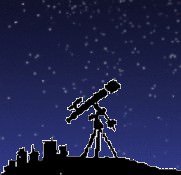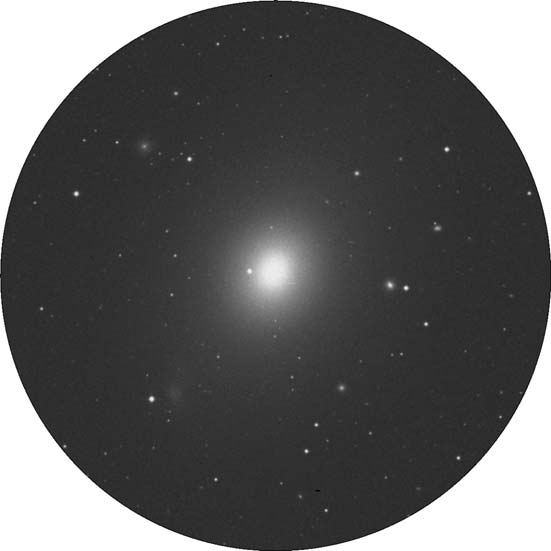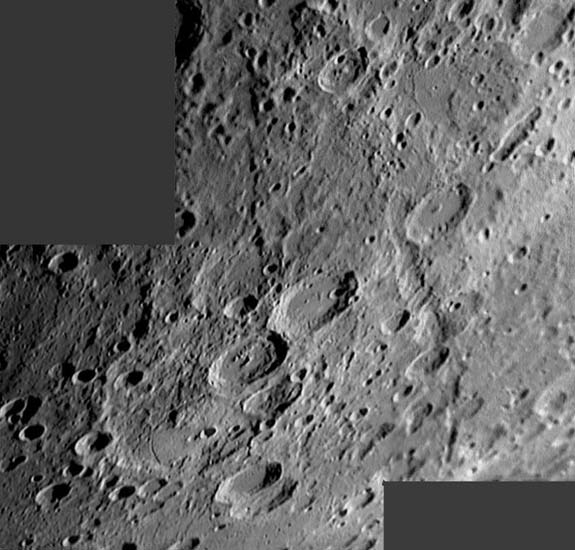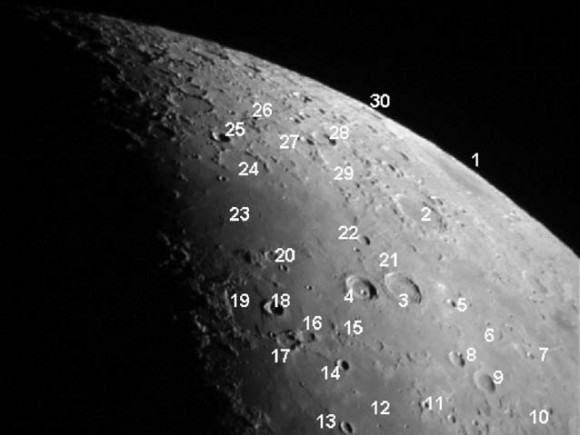Greetings, fellow SkyWatchers! Have you been watching the lovely crescent Moon as it climbs higher each night? What a beauty! With warmer nights in the northern hemisphere and cooler evenings bringing clear, deep views to the south – why not spend some time stargazing? We’ve got some great lunar features lined up for you to help you along with your lunar club challenges – as well as a bright galaxy and an interesting variable star. Time to dust off your optics and head out into the night…
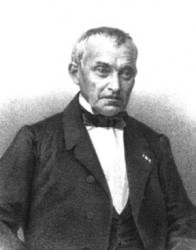 Friday, May 29, 2009 – Today we begin with the 1794 birth on this date of Johann Heinrich von Madler who, along with Wilhelm Beer, published the most complete map up to that time of the Moon, Mappa Selenographia. How fitting, then, that we should visit the Moon tonight! We’re going in search of another Lunar Club Challenge that will prove difficult because you’ll be working without a map.
Friday, May 29, 2009 – Today we begin with the 1794 birth on this date of Johann Heinrich von Madler who, along with Wilhelm Beer, published the most complete map up to that time of the Moon, Mappa Selenographia. How fitting, then, that we should visit the Moon tonight! We’re going in search of another Lunar Club Challenge that will prove difficult because you’ll be working without a map.
Relax! This will be much easier than you think. Starting at Mare Crisium, move along the terminator to the north following the chain of craters until you identify a featureless oval that looks similar to Plato seen on a curve. This is Endymion, and if you can’t spot it tonight don’t worry. We’ll look in the days ahead at some features that will point you to it!
Since tonight will be our last chance to galaxy hunt for a while, let’s take a look at one of the brightest members of the Virgo Cluster – M49 (RA 12 29 46 Dec +07 59 59). Located about 8 degrees northwest of Delta Virginis, and almost directly between a pair of 6th magnitude stars, the giant elliptical M49 holds the distinction of being the first galaxy in the Virgo Cluster to be discovered – and just the second beyond our local group.
At magnitude 8.5, this type E4 galaxy will appear as an evenly illuminated egg shape in almost all scopes, and as a faint patch in binoculars. Although a possible supernova event occurred in 1969, don’t confuse the foreground star noted by Herschel with something new! Most telescopes won’t be able to pick this region apart – especially with the Moon so near – but there are also many fainter companions near M49, including NGC 4470. A sharp-eyed observer named Halton Arp noticed them and listed them as ‘‘Peculiar Galaxy 134 ’’ – one with ‘‘fragments’’!
 Saturday, May 30, 2009 – Today we begin with the 1423 birth of Georg von Peuerbachon this date, a follower of Ptolemy’s astronomy. Georg calculated eclipses; observed Halley’s Comet before it was so named; and created astronomical instruments. Following Georg nearly half a millennium later was Hannes Alfven, born in 1908. Alfven’s life work was plasma and its electric and magnetic forces. Lastly, we have Aleksei Arkhipovich Leonov, who was born in 1934. Leonov was the first man to climb out of a spacecraft (the Voskhod II ) and into space. He was the first true ‘‘astrophotographer’’ as he filmed for 10 minutes while orbiting!
Saturday, May 30, 2009 – Today we begin with the 1423 birth of Georg von Peuerbachon this date, a follower of Ptolemy’s astronomy. Georg calculated eclipses; observed Halley’s Comet before it was so named; and created astronomical instruments. Following Georg nearly half a millennium later was Hannes Alfven, born in 1908. Alfven’s life work was plasma and its electric and magnetic forces. Lastly, we have Aleksei Arkhipovich Leonov, who was born in 1934. Leonov was the first man to climb out of a spacecraft (the Voskhod II ) and into space. He was the first true ‘‘astrophotographer’’ as he filmed for 10 minutes while orbiting!
Tonight let’s take our own journey to the Moon and look at a beautiful series of craters – Fabricius, Metius, and Rheita.
Bordered on the south by shallow Jannsen, Lunar Club Challenge Fabricius is a 78-kilometer diameter crater highlighted by two small interior mountain ranges. To its northeast is Metius, which is slightly larger, with a diameter of 88 kilometers. Look carefully at the two. Metius has much steeper walls, while Fabricius shows differing levels and heights. Metius’s smooth floor also contains a very prominent B crater on the inside of its southeast crater wall. Further northeast is the lovely Rheita Valley, which stretches almost 500 kilometers and appears more like a series of confluent craters than a fault line. The 70-kilometer diameter crater Rheita is far younger than this formation
because it intrudes upon it. Look for a bright point inside the crater, its central peak.
While the Moon is still west, let’s have a look at telescopic star W Virginis located about 3.5 degrees southwest of Zeta (RA 13 26 02 Dec -03 22 43). This 11,000 light-year-distant Cepheid-type variable is, oddly enough, a Population II lying outside the galactic plane. This expanding and contracting star goes through its changes in a little over 17 days and will vary between 8th and 9th magnitude. Although it is undeniably a Cepheid, it breaks the rules by being both out of place in the cosmic scheme and displaying abnormal spectral qualities!
 Sunday, May 31, 2009 – Today we begin with noting the 1872 birth on this date of Charles Greeley Abbot, who may very well have been the first astronomer to suspect that the radiation from the Sun might vary over time, and thus it was technically a variable star. When Abbot became the director of the Smithsonian Astrophysical Observatory (SAO), the SAO established a network of solar radiation observatories around the world. After many decades of study, a connection was made between solar variations and weather on Earth.
Sunday, May 31, 2009 – Today we begin with noting the 1872 birth on this date of Charles Greeley Abbot, who may very well have been the first astronomer to suspect that the radiation from the Sun might vary over time, and thus it was technically a variable star. When Abbot became the director of the Smithsonian Astrophysical Observatory (SAO), the SAO established a network of solar radiation observatories around the world. After many decades of study, a connection was made between solar variations and weather on Earth.
Tonight the Moon will be our companion. Now well risen above atmospheric disturbance, this would be a great time to have a look for several Lunar Club Challenges you might have missed. Most prominent of all will be two craters to the north named Atlas and Hercules. The easternmost Atlas was named for the mythical figure who bore the weight of the world on his shoulders. The crater spans 87 kilometers and contains a vivid Y-shaped rima in the interior basin. Western Hercules is considerably smaller at 69 kilometers in diameter and shows a deep interior crater, called G. Power up, and look for the tiny E crater, which marks the southern crater rim. North of both is another unusual feature that many observers miss. It is a much more eroded and far older crater showing only a basic outline; this crater is known as Atlas E.
Since we’re here, let’s take a crater walk and see how many features we can identify. . . Good luck and clear skies!
Atlas region: (1) Mare Humboldtianum, (2) Endymion, (3) Atlas, (4) Hercules, (5) Chevalier, (6) Shuckburgh, (7) Hooke, (8) Cepheus, (9) Franklin, (10) Berzelius, (11) Maury, (12) Lacus Somniorum, (13) Daniel, (14) Grove, (15) Williams, (16) Mason, (17) Plana, (18) Burg, (19) Lacus Mortis, (20) Baily, (21) Atlas E, (22) Keldysh, (23) Mare Frigoris, (24) Democritus, (25) Gartner, (26) Schwabe, (27) Thales, (28) Strabo, (29) de la Rue, and (30) Hayn.
Until next week? Ask for the Moon, but keep on reaching for the stars!
This week’s awesome images are Johann Heinrich von Madler (historical image), M49 (credit—Palomar Observatory, courtesy of Caltech), Aleksey Arkhipovich Leonov (archival image), Fabricius, Metius, and Rheita (credit—Alan Chu), Charles Greeley Abbot (historical image) and Atlas region (credit—Greg Konkel, annotations by Tammy Plotner). We thank you!

